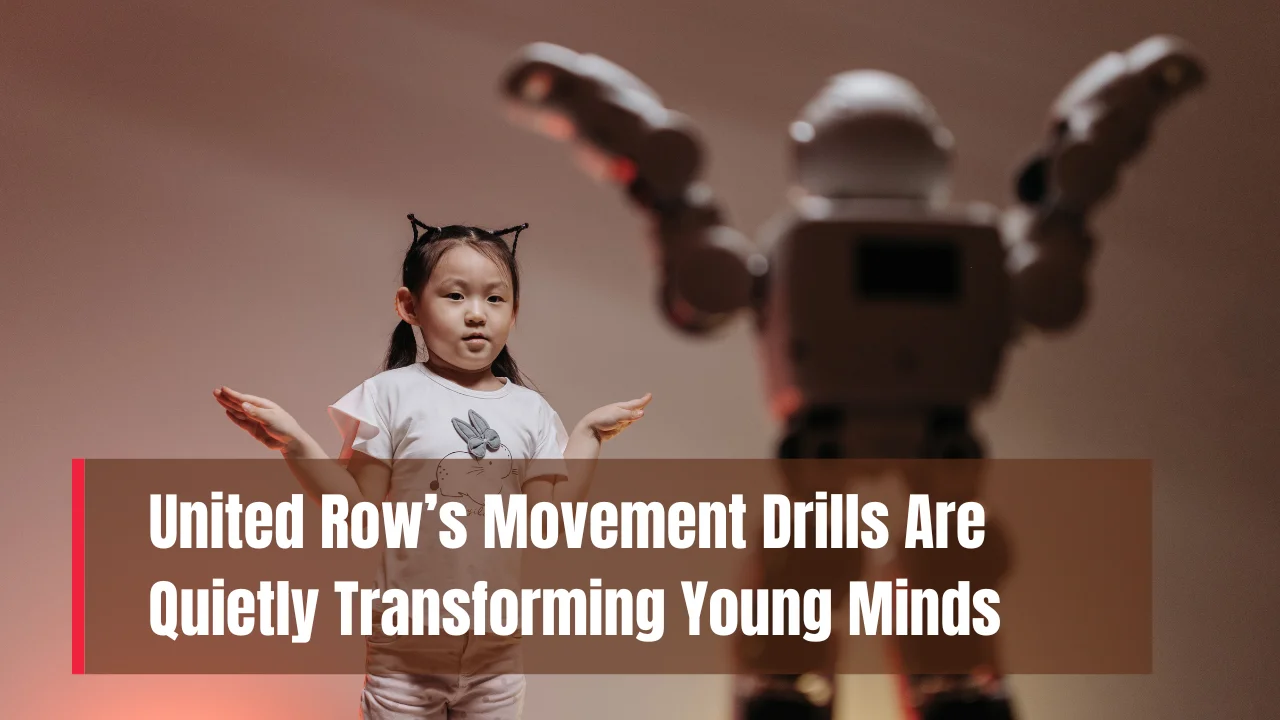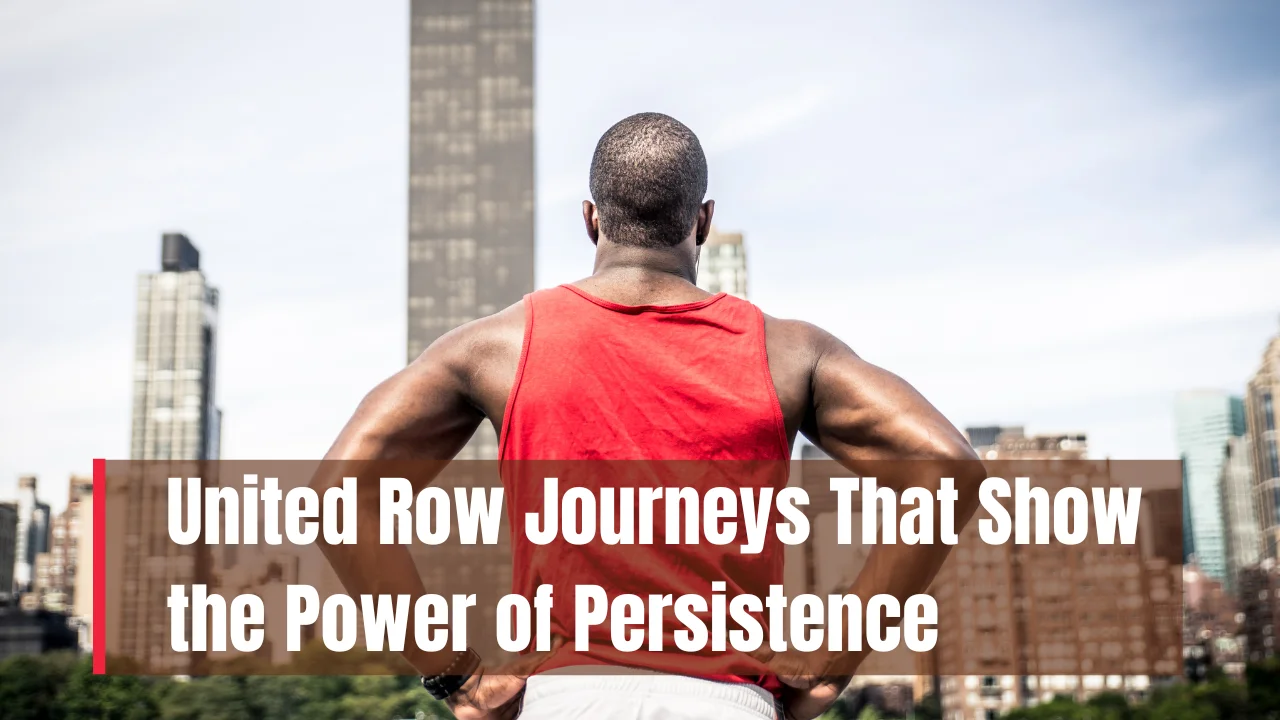Movement Drills: Movement drills are quickly becoming a game-changer in education and behavior development, especially for those who struggle with focus. In a world flooded with distractions—from screen time to overstimulation in classrooms—finding effective ways to guide attention is more important than ever. Physical movement, often overlooked, is proving to be one of the most powerful tools in helping distracted minds find clarity and purpose.
This article explores how United Row has crafted an innovative system that combines structured physical activities with mental tasks to build concentration and reduce mental drift. You’ll discover the science-backed reasoning behind this method, how it benefits learners of all ages, and practical tips for applying these drills in everyday life to boost focus, memory, and mental discipline.
How United Row Uses Movement Drills to Teach Focus in Distracted Minds
United Row’s approach integrates movement drills into its core philosophy to tackle attention difficulties in a refreshing and effective way. Rather than demanding stillness, which is often difficult for individuals with attention issues, they use movement to channel energy. These drills create a structure where motion becomes a focusing tool, not a distraction. This concept is grounded in neurodevelopment, as physical engagement can stimulate brain areas linked to focus, coordination, and memory. United Row doesn’t just promote fitness—they foster mental discipline by bridging the gap between movement and mindfulness.
Overview of United Row’s Focus-Driven Method
| Aspect | Details |
| Method Type | Structured physical activities paired with cognitive tasks |
| Primary Goal | Improve attention and reduce distractions |
| Ideal For | Children, teens, and adults with focus difficulties |
| Core Strategy | Repetition of movement sequences tied to mental exercises |
| Key Benefits | Boosted focus, better memory, improved emotional control |
| Customization Level | High – drills are adapted based on age and attention levels |
| Session Duration | Ranges from 10 to 30 minutes |
| Equipment Required | Minimal – drills are designed to be done anywhere |
The Power of Movement in Learning
There is a growing understanding that physical movement plays a critical role in learning and cognitive function. United Row taps into this by turning movement drills into a structured framework for developing attention. These aren’t random exercises; they’re rhythmic, goal-oriented activities designed to stimulate the brain’s executive function systems.
By combining body movements with mental challenges—like coordinating steps with counting or recalling sequences—learners are required to stay present in the moment. This active participation pushes the brain to process more deeply, leading to better retention and engagement. As the learner practices these drills, they gradually build the mental endurance needed for tasks that demand sustained focus.
How Movement Helps Distracted Minds
Distracted minds often seek stimulation and struggle with passive environments. Movement provides the sensory input they crave, while structure channels it constructively. United Row uses movement drills to give that sensory input a purpose—each drill is intentional, designed to target brain areas that regulate attention and self-control.
For example, simple drills like hop-step-clap sequences require coordination and timing, which keep the brain engaged. When paired with verbal cues or memory tasks, the body and brain must work together. This dual-tasking effect is highly beneficial for individuals with ADHD, anxiety, or general inattentiveness, offering both mental stimulation and grounding.
United Row’s Unique Approach
What separates United Row from general movement-based learning programs is their attention to personalization. The structure of their movement drills is adaptable, ensuring that each participant is challenged but not overwhelmed. Their method involves progressively increasing the complexity of tasks—starting with basic patterns and advancing to multi-layered drills that require memory, balance, and coordination.
United Row also trains instructors to guide participants through these transitions mindfully. This focus on steady growth ensures that every learner builds confidence alongside improved attention. It’s not just about movement—it’s about developing self-awareness through motion.
Benefits of United Row’s Movement-Based Training
The positive changes observed through United Row’s program go beyond just academic improvement. Participants often experience:
- Sharper attention spans during both physical and mental tasks
- Reduced impulsivity and emotional outbursts
- Improved body awareness and coordination
- Increased motivation, especially in high-energy individuals
- Better sleep patterns and stress management
- Positive reinforcement through achievement in movement-based goals
By aligning the body and mind, these drills not only teach focus—they help transform behavior.
Two Key Types of Movement Drills Used at United Row:
1. Pattern Drills
Pattern drills include repeated sequences like skip-clap-turn or step-tap-jump, which are designed to be both fun and mentally engaging. These drills develop rhythm, timing, and coordination. As participants repeat them, their brain learns to stay on task, manage sequences, and build neural pathways that support focused behavior.
2. Cognitive Combo Drills
These drills go a step further by combining movement with mental tasks. For example, learners may be asked to march in place while naming animals or solve math problems during a balance pose. This dual-layered activity stimulates the prefrontal cortex, the area responsible for decision-making, focus, and self-regulation.
Practical Application for Everyday Focus
The beauty of movement drills is that they don’t require fancy equipment or specialized settings. Teachers can incorporate them in classrooms, parents can use them during study breaks, and even office workers can take advantage of short movement sessions to reset their minds.
A few simple ways to bring this into your day:
- Do 3 minutes of jumping jacks while counting backward
- Hop in place while spelling words aloud
- Walk in a figure-eight pattern while planning your to-do list
- Balance on one foot while recalling three things you learned today
These small, manageable practices train your brain to return to focus more quickly and with less effort.
Why This Approach Works Better Than Traditional Methods
Traditional focus-building strategies often require stillness and quiet, which can be unnatural for restless or high-energy individuals. By embracing movement instead of fighting it, United Row’s method creates a more inclusive and realistic path to focus. Movement drills offer an outlet for excess energy while simultaneously strengthening attention.
This proactive, physical approach respects the needs of different learning styles. Instead of punishing distraction, it redirects it into productive energy. Over time, this reshapes how participants respond to tasks, emotions, and stress, making them more resilient and adaptable.
Final Thought
United Row’s integration of movement drills into focus training is a breath of fresh air in a field often dominated by passive methods. Their approach works with the natural rhythms of the body and brain, teaching discipline, control, and engagement through action. Whether you’re a parent, educator, or someone who simply wants to improve your attention span, these drills offer a smart, simple, and sustainable solution.
Try adding a few movement-based activities to your routine and notice how your ability to concentrate starts to shift. Share this article if it resonated with you or leave a comment about your experience with focus training. You might also explore more holistic practices that work hand-in-hand with physical movement to enhance mental performance.
FAQs
1. Are movement drills suitable for adults too?
Yes, movement drills are beneficial for people of all ages. Adults often use them to refocus during long work hours or as part of stress management routines.
2. How long should a typical session be?
Sessions can range from 10 to 30 minutes, depending on age and attention levels. Even short sessions can yield positive results.
3. Do these drills replace traditional therapy?
No, they are a complementary approach. They can enhance therapy or academic interventions, but not replace them.
4. Can these be used in schools?
Absolutely. Teachers can easily integrate movement drills between lessons or during transitions to help students reset and refocus.
5. What if a child has very high energy?
That’s exactly who benefits the most. The structure of the drills channels energy into focus, making it a great tool for high-energy individuals.












